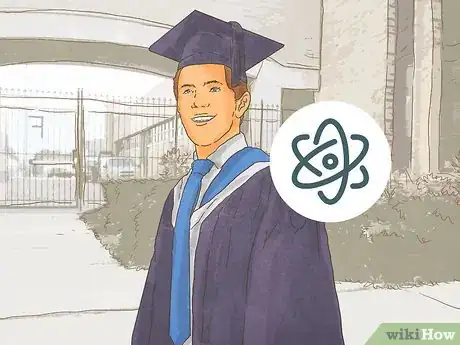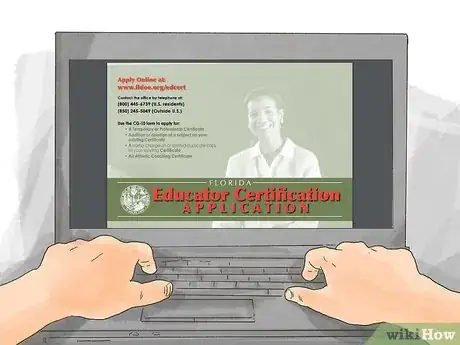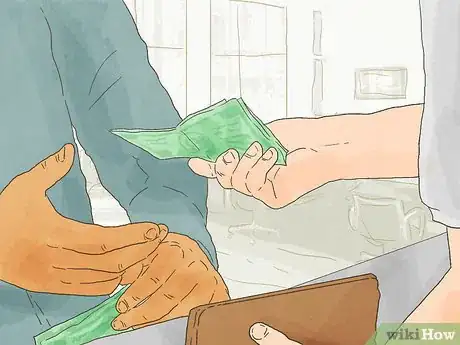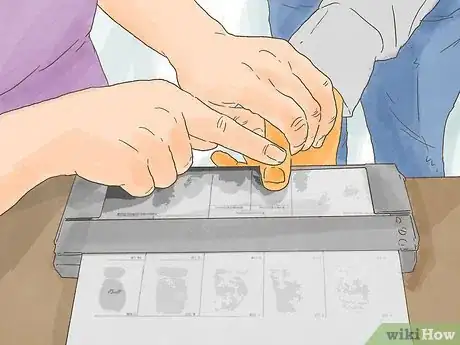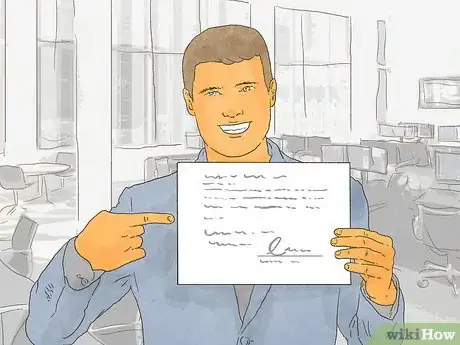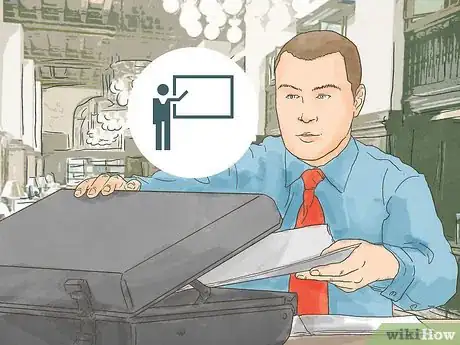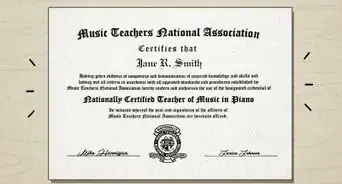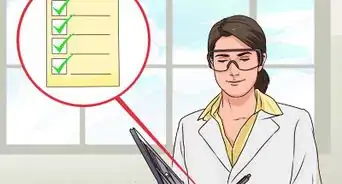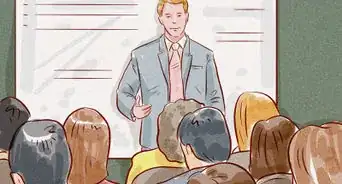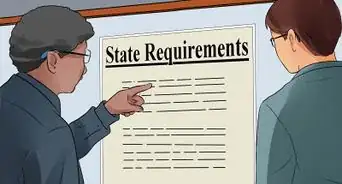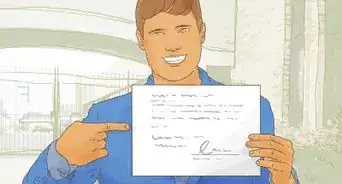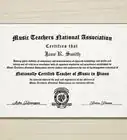This article was co-authored by Courtney Copriviza. Courtney Copriviza is an Elementary School Teacher based in Maui, HI. Courtney specializes in elementary education, classroom management, and social and emotional development. She holds a BA in Communication with a minor in Urban Education and an MA in Teaching from Santa Clara University. Courtney has also taught high school in Madrid, Spain. She is a member of Kappa Delta Pi International Honors Society in Education.
There are 13 references cited in this article, which can be found at the bottom of the page.
This article has been viewed 66,036 times.
Florida has the fourth largest school system in the United States, with nearly 4,600 schools in more than 65 districts. Over the next few years, the Florida education field may grow up to 2.3 percent, making it a prime target for teachers seeking employment. However, there are several requirements you need to fulfill to become a teacher in Florida. Ultimately, by meeting educational requirements and successfully completing the certification process, you’ll be ready to accept a job as a teacher in Florida.
Steps
Fulfilling Your Education Requirements for Professional Certification
-
1Earn a bachelor’s in education with a specialization. The simplest route to professional certification is to complete a B.S. degree in education and have a specialization in a given field. While your education degree courses will prepare you for classroom management and more, your specialization courses will equip you with subject area knowledge.[1]
- Your bachelor’s must be completed at an accredited college or university.
- You have the choice of your specialization. Specializations include social studies, math, science, art, and more.
- Qualifications may vary if you want to become a nursery teacher. Some positions may hire you as long as you've graduated from high school and are certified to work with young children, while others may require an associate's or bachelor's degree.
-
2Hold a master’s degree in education with a specialization. If you already hold a non-education bachelor’s degree, you can choose to complete a master’s degree in education. This degree will provide you with all the coursework needed to prepare you for classroom management, curriculum design, and more.
- Your master’s degree must be completed at an accredited college or university.
- If your bachelor’s degree is in a teachable field like social studies, math, science, or art, you can choose to complete a master’s degree with a specialization in curriculum, education management or something similar.
- You usually don't need a doctorate to teach at a school, but it can help you get a pay bump.
Advertisement -
3Complete a bachelor’s degree program and fulfill other requirements. If you hold a bachelor’s degree and do not want to complete a new degree, there are several additional qualifications you can meet to gain your professional certification. They include:
- Pass 15 to 20 credit hours of education courses.
- Complete the Florida Teacher Certification Exam. This exam includes a subject area exam, a professional education test, and a general knowledge section.
- Fulfill professional educator competencies during your first 2 years of teaching.
- Serve as a full-time teacher for two years.
Meeting Educational Requirements for Temporary Certification
-
1Complete a bachelor's degree. If you don't meet the requirements for professional certification, you'll need to secure a temporary certification. The temporary certification is intended to get you in the classroom so you can have the time needed to meet the requirements of professional certification. You do, however, need to complete a bachelor's degree.[2]
- If your degree is not in an area you intend to teach, you'll need to pass a Florida Subject Area Examination.
- If your degree is in the subject area you want to teach, you won't have to take the subject area test. For example, if you hold a bachelor’s degree in History, you can be certified to teach social studies. If you wanted to teach English, you’d have to have had a double major in English and History.
- You must have at least a 2.5 GPA for your college courses in the subject area you want to teach.[3]
-
2Earn a master’s degree in the area you want to teach. If your bachelor’s degree is not in the subject area you intend to teach, you can choose to complete a master’s degree in that subject area. Holding a master’s degree will demonstrate that you are qualified to instruct on that subject.
- Your master’s degree must be granted by an accredited college or university in the United States.
-
3Fulfill work-related requirements. In addition to holding a bachelors or masters in a specific field, you’ll have to meet several requirements to maintain your temporary certification. Without fulfilling these requirements, your temporary certification will either not be granted or will be revoked.
- You must be offered a full-time teaching job at a public school.
- You must meet any continuing education requirements as designating by the state and your district.
Becoming Certified and Getting Your License
-
1Pass all three sections of the Florida Teacher Certificate Examination (FTCE). After fulfilling your education requirements, you’ll have to pass the FTCE. The FTCE verifies that you are qualified to teach in Florida. Without passing it, you won’t be eligible for certification.[4]
- You can choose to take the FTCE at any point during the year at a testing center near you. Visit http://www.fl.nesinc.com/FL_TestDates.asp for more information.
- The first section is the FTCE General Knowledge Test. It has four subtests: English language skills, reading, mathematics and essay. The first three are multiple-choice examinations requiring 73, 65 and 60 correct answers for a passing score (respectively), as of May 2011. The essay section requires a score of 6 from a possible 12.
- The next section is the FTCE Professional Education Test. Comprised of multiple-choice questions, this pedagogy exam requires 73 correct answers to pass.
- The final section is the FTCE Subject Area Examinations. Most of the 42 available tests are multiple-choice assessments, although some also include writing, reading or speaking subtests, as well. The required tests are determined upon evaluation of the application for certification, and they are reported on the Official Statement of Status of Eligibility.
-
2Complete the CG-10 application. The CG-10 is the basic certification application. When completing the CG-10, you’ll enter all relevant information including your education background, experience, and personal information. You’ll need to complete and submit this form before gaining certification.[5]
- You can choose to complete the CG-10 on your computer or you can print it and fill it in.
- Access the application: https://www.flrules.org/gateway/readRefFile.asp?refId=4772&filename=CG-10.pdf
- Make sure to use blue or black ink when completing the form.
- If you have a criminal record, you’ll need to check the “yes” box and provide specific information about your offense.
- Submit your form to the Florida Department of Education, Bureau of Educator Certification, Room 201, Turlington Building, 325 West Gaines Street, Tallahassee, FL, 32399-0400.[6]
-
3Pay application fees. When submitting your application, you’ll have to include fees. These fees pay the cost of processing your information and other costs the state incurs in certifying you. You’ll need to pay the application fee before the state will process your paperwork.[7]
- The fee for the CG-10 application is usually $75. However, there may be added costs if you want to add a subject, delete one, or make any changes to your certification.
- Fees are nonrefundable.
- You can pay with check or money order.[8]
-
4Provide official transcripts. Along with your application, you’ll need to include official transcripts. These transcripts verify you’ve fulfilled your education requirements. Without them, you won’t receive your certification.[9]
- Unofficial transcripts will not be accepted.
- If you have a degree from a college or university outside the U.S., you’ll have to have a credential evaluation agency determine equivalency.[10]
-
5Submit your fingerprints for criminal background processing. If you are employed by a Florida school district, you will be able to do this through the district's personnel office.[11]
- If you are not yet employed, request a fingerprint packet from the Bureau of Education Certification.
-
6Send in your out-of-state certificates. Florida holds teaching certificate reciprocity agreements with many other states. If you are licensed/certified to teach in one of these states, Florida will offer you a stream-lined process toward certification.
- Florida must have an agreement with the state.
- The license or certification must be for the same subject you will teach in Florida.
- The license or certification must be valid.
- Florida also accepts certificates granted by the National Board for Professional Teaching Standards (NBPTS).
- For a complete list of states that have reciprocity agreements, visit: http://www.fldoe.org/teaching/certification/pathways-routes/certified-teacher-or-administrator.stml[12]
-
7Convert your temporary certificate to a professional certificate. There are several ways you can convert your temporary certification to a professional one. If you plan to teach for more than three years, you’ll have to complete those requirements. The pathways to do this include:[13]
- Gain a certificate from the American Board for Certification of Teacher Excellence and show that you have taught for three years.
- Complete a Florida Professional Development Certification Program through an accredited college or university and pass the Florida certification exams.
- Demonstrate substantial teaching experience and pass the Florida certification exams. The Department of Education staff will determine if your experience qualifies as “substantial.”
- Complete the required number of college teaching courses, have teaching experience, and pass the Florida certification exams.
- Hold a degree in a STEM field, be teaching STEM at the High School level, hold a 6-12 STEM certification, have high student performance ratings, and pass the Florida certification exam.[14]
Finding a Job
-
1Compile a teaching portfolio. A teaching portfolio is a comprehensive collection of materials related to your teaching ability and style. Your portfolio will give administrators an idea of your experience and what they might expect from you in the classroom. Your portfolio may include:
- Recommendations from coworkers, supervisors, or even former students
- A resume
- A teaching philosophy
- A list of courses you have taught or can teach.[15]
-
2Search job boards. There are a number of job boards on the internet where you can view postings for teaching jobs in Florida. While some websites may only have jobs for schools in a certain region, others may include jobs throughout the entire state.
- Visit teachinflorida.com
- View the website of the school or district you want to teach in. For example, visit Lake County School's employment site at: http://www.lake.k12.fl.us/employment.
- Find Teacher Shortage Areas in Florida on the Teach.com Website
-
3Ask friends. Perhaps the best source of leads about available jobs are your friends. These leads are important since your friends will know the circumstances of the position and may be able to recommend you to the administrator or committee who makes the hiring decision.
- If you have friends who teach in the district you want to teach, as them if they know of any positions.
- Tell friends who you may not know have connections in public schools. They may know someone who has a connection and could recommend you.
- Many teaching jobs are secured through some sort of social connection.
-
4Become a substitute teacher. A great way to get your foot in the door is to become a substitute teacher in the school or district you want to teach in. By becoming a substitute teacher, you'll get to know other teachers and administrators. When it comes time to hire new faculty, you may find yourself on the short list.
- The district or temp agency employing you will make sure you meet the minimum requirements of a high school diploma.
- You'll have to pass a background check. Any drug convictions like a felony will make it very hard for you to become a substitute teacher.[16]
References
- ↑ https://www.teachersoftomorrow.org/florida/how-it-works
- ↑ https://www.teachersoftomorrow.org/florida/how-it-works
- ↑ http://www.fldoe.org/teaching/certification/pathways-routes/
- ↑ https://www.fldoe.org/accountability/assessments/postsecondary-assessment/ftce/
- ↑ https://www.fldoe.org/teaching/certification/steps-to-certification/step-1-completing-your-initial-applica.stml
- ↑ http://www.fldoe.org/teaching/certification/steps-to-certification/step-1-completing-your-initial-applica.stml
- ↑ https://www.fldoe.org/teaching/certification/steps-to-certification/certification-application-fee-schedule.stml
- ↑ https://www.flrules.org/gateway/readRefFile.asp?refId=4772&filename=CG-10.pdf
- ↑ https://www.fldoe.org/teaching/certification/faq.stml
- ↑ http://www.fldoe.org/teaching/certification/steps-to-certification/step-1-completing-your-initial-applica.stml
- ↑ https://www.fldoe.org/teaching/certification/steps-to-certification/step-4-submitting-fingerprints-for-cer.stml
- ↑ http://www.fldoe.org/teaching/certification/pathways-routes/certified-teacher-or-administrator.stml
- ↑ https://www.fldoe.org/teaching/certification/general-cert-requirements/moving-from-the-temporary-to-the-profe.stml
- ↑ http://www.fldoe.org/teaching/certification/pathways-routes/
- ↑ http://www.ascd.org/publications/educational-leadership/mar96/vol53/num06/Developing-an-Effective-Teaching-Portfolio.aspx
- ↑ https://www.scps.k12.fl.us/district/departments/human-resources/substitute-teacher-information.stml
About This Article
To become a high school teacher, start by joining a club for future teachers or becoming a peer tutor while you’re in high school to help your prepare for a career in teaching. After high school, earn a bachelor’s degree in the subject you want to teach, such as English or Biology. Additionally, complete a Teacher Preparation Program, which includes classes and a teaching internship. Once you’ve graduated, pass your certification tests and apply for a teaching license with the state. For advice on how to compile a teaching portfolio, read on!

